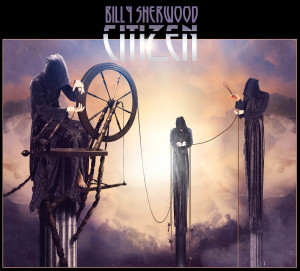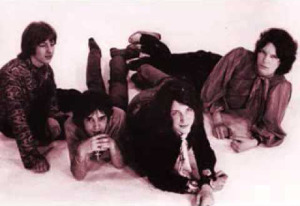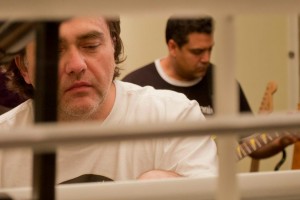(Frontiers Music; 2015)
Billy Sherwood seems to be a guy who doesn’t rattle easily. A guy who can step in and handle enormous responsibilities without flinching. In the late ’90s and early 2000s, he stepped in to some pretty big shoes, and helped a struggling Jon Anderson-fronted Yes continue their journey on both record and stage. Sherwood’s a big part of the sound on OPEN YOUR EYES and THE LADDER, both underrated. While releasing a series of solo albums and guesting on records all over the place, both proggy and not, Sherwood became a kind of go-to guy when a band needed not just a multi-instrumentalist, but an experienced engineer. Chris Squire, the legendary Yes bassist who succumbed to leukemia last year, initially picked Sherwood to replace him on bass for a huge 2015 Yes tour that Squire knew he couldn’t participate in. That’s no small thing and Sherwood, by all accounts, jumped in ready to go. But then, Squire left this mortal coil, and now, well, we have to assume Sherwood will continue with Yes, and might even be the point man for a brand new phase, one that none of us can anticipate yet. The guy is a fantastic, versatile musician, and he’s earned good karma a-plenty.

Which brings us to CITIZEN, surprisingly Sherwood’s seventh or eighth solo album since 1999. It’s a solid platter, with appearances by Yes members both past and present, and the last song recorded by Chris Squire (he appears on the opening track, “The Citizen”). There’s a familiarity about the sound that you can’t deny, and it wouldn’t be fair to even think in terms of “Yes-lite” or something. These are muscular, strong compositions, and why not use musicians of the caliber of YES men such as Tony Kaye, Rick Wakeman and Geoff Downes if you can? This is still a Sherwood album through and through, and he sings most of the lead vocals. Among standout tracks: “No Man’s Land,” a fizzy prog confection that alternates between memorably processed lead vocals, Yes-like harmonies, and a confidently anchored arrangement. “Age of the Atom” is a stirring piece that has a descending chord progression, a hooky chorus and some zippy keyboard playing… this one definitely sticks in the ear. By the way, this and “The Great Depression” may bring another progressive behemoth to mind – Genesis. Sherwood sounds a tad like Peter Gabriel at times, and it’s worth mentioning that Steve Hackett from that band is also featured on the record (on “Man and the Machine”). “Trail of Tears” is a tune Gabriel would love… it echoes his aesthetic about indigenous peoples and the subject matter definitely takes on the famed Native American death march of the 1800s. Some very airy, charming synth work is an interesting sonic counterpoint to the theme, and you can just enjoy this track musically without worrying about the history lesson. It’s really good, plain and simple. The aptly named “Escape Velocity” is suffused with Yes DNA… if you just heard this playing, especially during the chorus, you would guess it was likely the real YES, an unfamiliar track perhaps. This is really spirited stuff, and you will swear you can hear Squire on that chorus and bass (though it’s really Billy showing the world why he was Chris’ handpicked successor). Anyway, this is one of the album’s highlights. The ending really kicks ass. And so does the ending of the entire disc, “Written In the Centuries,” which finds current Yes lead singer Jon Davison outfront on vocals. Nice, tight harmonies, chiming guitars, mystical lyrics, tempo changes… why, YES, peeps, you’ll recognize this sound! But somehow it’s also… different. Fresh. It’s the Billy Sherwood approach to prog, and it’s plenty meaty!

The album has a story line, by the way, something about a lost soul being reincarnated into different historical periods. There’s a song about Galileo (featuring vocals from XTC’s Colin Moulding) and all sorts of references you’ll have fun trying to catch. But you don’t HAVE to know the theme or decipher the lyrics to appreciate this album. There’s a majesty about a lot of this stuff that shows the pedigree of the players. There are melodies, no song is all that long, and the sonics are nicely balanced between what all Yes fans might expect and fresher elements that Billy Sherwood, a thoughtful musician, took care to weave into the compositions. This CITIZEN is a reliable one indeed, and deserves to take its rightful place in the ever evolving community of Yes and related prog-dom. Nice job, Billy boy. I hope your pal Chris got to hear most of this before he said goodbye.












